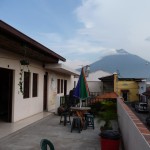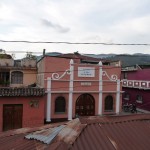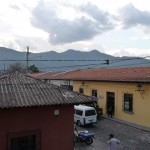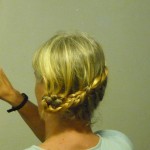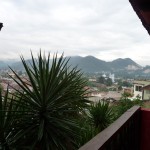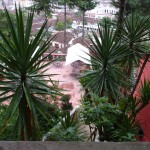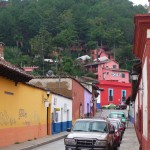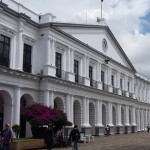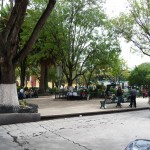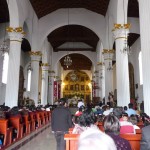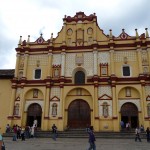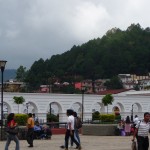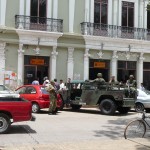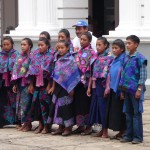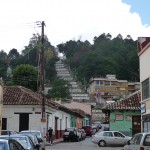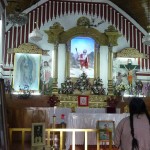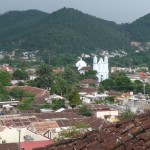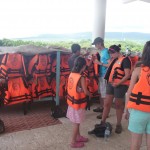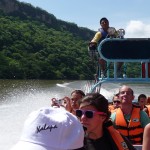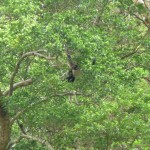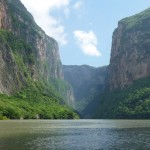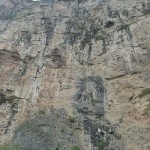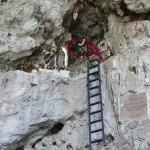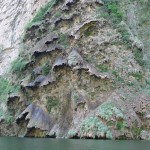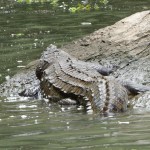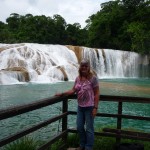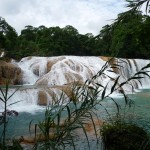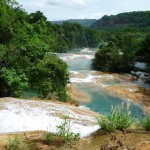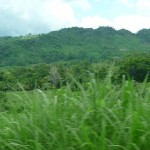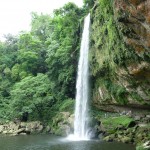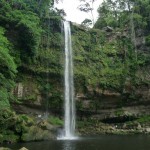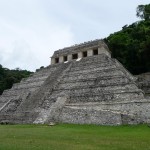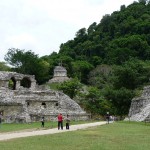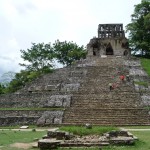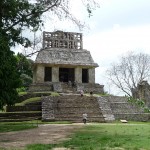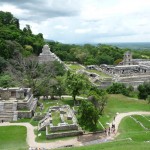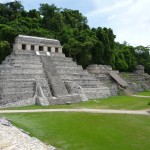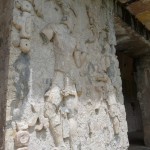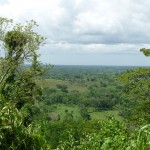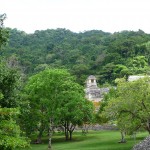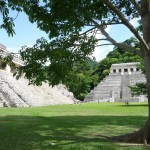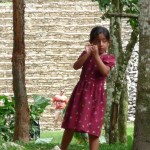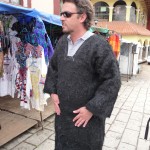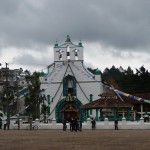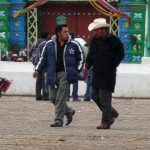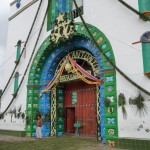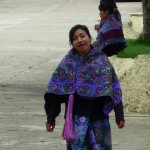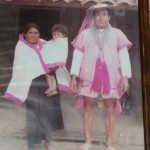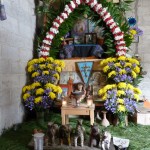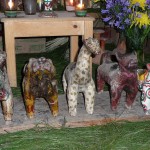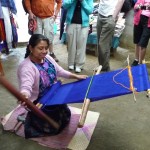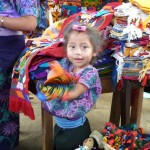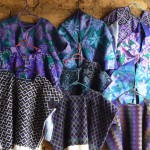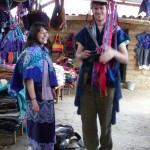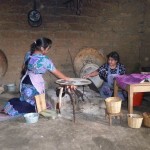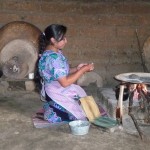After finishing my “Moon Course” writing in Antigua, Guatemala, I faced a small decision regarding how to renew my Guatemalan tourist visa, which was expiring on June 10.
The most fun option seemed to be a short trip back to Mexico, after which I would return to Guatemala with a fresh 90 days in preparation for my time at the Sun Course back in San Marcos La Laguna.
While in Mexico, I gave myself permission to simply be a tourist for a few days — going on three tours during my four days in the Mexican state of Chiapas. Following are some of my photos during this interim break in my activities.
As usual, the displayed images are low resolution thumbnail images. You can click on any photo to download and/or view a higher resolution photo.
Antigua, Guatemala
While in Antigua, I was still quite tired as I continued recovering from a weak stomach. I did very little while there other than publish four blog entries and explore the local area enough to locate food. The only photos I took were right at my hotel itself.
This is a photo take on the balcony of my hotel, directly in front of my second-floor room. My bedroom, on my immediate left, is not visible in this photo. The beautiful view is of “Volcan Agua” (Water Volcano) that towers over the landscape at this end of Antigua. This volcano is not active — unlike the active Pacaya Volcano not too far from Antigua, the same one that blew its top a few weeks ago, dumping a few feet of ash on Guatemala City.
This photo (also taken from my hotel balcony) is of a small evangelical church directly across the street. They held some quite animated services in this little church. It kind of reminded me of my time in the Mayan Village of Santa Elena in Belize.
One final view from my hotel balcony. This area of Antigua is beautifully maintained and clean. The streets are cobblestone, the buildings are painted, garbage is collected, and the people are very friendly.
I had heard great comments about Antigua before arriving, giving me the impression that Antigua would be more like a European city. To me it simply felt like a very well maintained, but quite typical, Guatemalan city.
Chiapas, Mexico
The Mexican State of Chiapas is directly adjacent to the western edge of northern Guatemala. A look at a map shows that Chiapas is the most southern area of all of Mexico, even further south than the Yucatan area.
I was waiting for my tourist shuttle at 5:00 a.m. in Antigua. We changed to a diffrent bus mid morning as we joined up with more passengers. Then we changed to yet another mini-van at the Guatemala/Mexico border after passing through customs. The whole trip took over 13 hours — much longer than we had been told.
While waiting around at the Guatemala border, a lady on my bus (from Taiwan) seemed obsessed with my long hair. She asked if she could do something with it and I said no, thanks, but that is not necessary. Ten seconds later she began braiding and I just smiled as I allowed her. She created this very interesting braid all across the back of my head. Later that evening, I took this self-photo in a mirror. As you can see, my hair is now a mix of salt-and-pepper grey and a yellowish blonde. I have not had it cut or colored in nearly eight months (other than trimming my own bangs).
San Cristobal De Las Casas
My main home-base while in Chiapas was the beautiful city of San Cristobal de las Casas. I arrived here late on June 10 and left early in the morning on June 15, giving me four full days to simply enjoy my time and to play tourist.
This is one of my many beautiful views from the balcony of my hotel in San Cristobal De Las Casas, Chiapas, Mexico. My hotel was built on the side of a hill, and my room was among the few at the absolute highest level of the hotel. It was quite the climb up steep steps to get to my room — great exercise, but difficult since I was still dealing with a slightly weak feeling.
Another view from my balcony, this one looking down. Directly below is a patio level about half way up the hotel’s hill. Further below at the top of the photo are rooftops of nearby homes and businesses. The photo is slightly deceptive, as i used a zoom, so distances are not as they appear.
A view of my hotel as seen from a city street about 1/2 block below the hotel. The main part of the Hotel Los Morales is the burnt-orange building with sky-blue windows, straight ahead at street level. All of the pink buildings above the main hotel building are various guest rooms. My room is at the very top, slightly hidden behind the trees.
The city of San Cristobal (at least the historic center) is beautiful, clean, and well maintained. The city is situated very high up in the mountains, just under 7000 feet, and is quite cold at night — plus we are in the middle of rainy season.
This above photo is of the beautiful “Palacio Municipal” (municipal palace) adjacent to the main downtown plaza in the historic center.
This is just one view of the beautiful town square, called the “zocalo” by the locals.
This is the inside of a beautiful cathedral directly adjacent to the downtown plaza. I sat through the first fifteen minutes of some type of special “mass” service at the back of this beautiful building.
The front of another Catholic church, also on the main plaza, directly adjacent to the cathedral.
This photo is taken directly in front of the Palacio Municipal, looking back toward the hill where my hotel is situated. If you look closely, you can see the pink buildings on the side of the hill, barely left of the center point. My room is buried up in the trees.
As you can see, I was only about four blocks from the historic center of town. I loved my room …
A group of soldiers guarding a bank by the main plaza. Such armed presence was quite common around the city. One time I walked by a group of very serioius-looking gun-wielding soldiers who were accompanying some bank employees who were refilling an ATM machine.
This area of Mexico has a prominent Mayan presence. I witnessed this beautiful group of Mayan youth drssed in their brightly-colored traditional clothing. While someone from their own group was taking their photo, I could not help but sneak a photo of my own.
The steps leading up the middle of the hill (straight ahead) end at a small chapel on top of the hill. This is called the “Cerre de San Cristobal”. Saint Christopher is the patron saint of this beautiful mountain city.
My hotel is just barely to the right of this photo.
This is the inside of the small church at the top of the hill. At the very top center is a statue of “San Cristobal” (Saint Christopher) holding his staff.
A photo taken from the steps below the church. The city of San Cristobal is filled with beautiful bell-ringing churches — one of which is the blue and white one just right of center.
Sumidero Canyon
On June 12 — the exact one year anniversary of the beginning of my trip — the second birthday of one beautiful grandaughter — and the zeroth birthday of my newest grandson (yes he was born while I was playing tourist) — I took a tour to the beautiful and famous Sumidero Canyon, just a little more than an hour ride from San Cristobal.
The canyon tour is actually done in a large boat — and we were required to all wear these beautiful orange fashion accessories.
Looking back at our boat captain as we cruise up the river toward the entrance to the canyon.
Several spider monkeys were playing in tall trees near the entrance to the canyon. If you look closely you can see one of them hanging from a branch in the center of this photo.
The entrance to the beautiful Sumidero canyon. At one point the walls tower over 1000 meters (3250 feet) above the river below.
Looking up the side of one of the steeper and taller canyon walls.
A small shrine to “Our Lady of Guadalupe” that local residents have created in one small sheltered cavern at the edge of the river. If you look closely just to the right of the ladder you can see what many local people believe to be a natural manifestation/image of Guadalupe in the rock formations.
Many of the people in this area seem to be very religious.
The lower 2/3 of a very interesting formation in the canyon walls. Our tour guide called this a “Christmas Tree formation.”
I took many photos of the beautiful scenery in the canyon, but only opted to include this small set, because most of the scenery was quite similar to the first beautiful photo of the canyon entrance.
We passed this large crocodile on our way back down the canyon. He/she has to be at least six to eight feet in length …
Agua Azul
On June 13, a small tourist shuttle picked me up at 6:15 a.m. at my hotel for an all day tour to Agua Azul, Misol-ha, and the Mayan ruins of Palenque. We did not arrive back in San Cristobal until shortly before 10:00 p.m..
Over all, this amazing day was an exhausting journey of over 15.5 hours, of which all but about 4.5 of those hours were driving … but it was well worth it.
Our first stop was the beautiful cascades of “Agua Azul” (blue water).
Me standing in front of a lower portion of the cascades. I volunteered to take photos for a young couple, and they in turn asked if they could take a photo of me …
Another beautiful view of a lower portion of the cascades. We were given about an hour to explore the area, and it was so large that I spent most of that hour walking trails up and down the shores to a beautiful series of cascades …
A view from higher up the series of cascades, looking down toward the bottom.
Just one photo of some of the beautiful countriside that we drove through during our long day of driving. We only averaged about 30 mph during our drive because the roads were extremely curvy, filled with switchbacks. Also, many of the local indigenous people along the route have constructed home-made concrete speed bumps along the highway to slow down traffic near their small settlements and villages.
Misol Ha
About an hour after leaving Agua Azul, we stopped for thirty minutes to explore the waterfall at Misol Ha.
The waterfall was beautiful.
Another photo angle of the beautiful waterfall.
Palenque
Our final destination was the Mayan ruins of Palenque, famous for their beautiful mountain/jungle setting. The ruins are situated at the edge of the mountains that rise out of the flat Yucatan penninsula.
We arrived in Palenque at around 2:00 p.m., and were given three hours to explore the ruins on our own.
A view of the “Temple of Inscriptions”
Looking between the Temple of Inscriptions (right) and the Palace (left) up toward the area of the Temple of the Cross (upper center).
I think this is the Temple of the Cross
Another beautiful structure in the area of the “Temple of the Cross”
Looking from the top of a temple in the “Temple of the Cross” area, back toward the main section of ruins. The upper temple just left of center is the “Temple of Inscriptions” and the larger structure to the right is the Palace.
From the Palace, looking back at the Temple of Inscriptions.
A photo of one wall in the Palace complex.
A view from one of the temples, looking out over the flat Yucatan to the northeast. Unlike the comfortably cool temperatures of San Cristobal, it was VERY hot and humid here by the flat expanse of the Yucatan — very near sea level.
A view looking toward the mountains on the southwestern edge of Palenque. These beautiful ruins are nestled in the base of these gorgeous mountains.
Because the heat was so intense, exploring became very exhausting and I was drenched in sweat. I took up refuge in the shade of this sacred Ceiba tree (right) with a gorgeous view of the Palace (left) and the Temple of Inscriptions (right).
Later, I found a rock to sit on near the entrance to Palenque. While enjoying the shade and meditating, I could not help but be fascinated by watching this beautiful little girl playing with her hair more than 100 feet away from me. With my trusty zoom, I captured this candid image.
Chamula and Zinacantan
After a very late 9:45 p.m. return from Palenque, I took another tour the very next morning — this one to two indigenous towns near San Cristobal. The first one (Chamula) is famous for it’s ceremonial center and in the other (Zinacantan) we visited a small craft center.
Our tour guide, trying on a traditional wool outfit — very common among the indigenous Mayans in this area.
This is NOT a Catholic church — it is a very unique cermonial center for the local Mayan people. Chamula is famous for this center. Taking photos during ceremonies is strictly forbidden, and I have heard and read many stories about what happens to tourists who ignore that rule. Our tour guide told us that it was OK to take a few photos right here … but a minute later he ordered us to stop because a ceremony began to pass through the plaza.
Bottle rockets and firecrackers were being set off constantly during the couple of hours that we spent in this area.
My favorite ceremony was in watching two men zigzag back and forth in the foreground plaza. They were riding on horses, dressed in elaborate costumes, and seemed quite devoted in their ceremonial worship. Our guide told us they were doing the early stages of a huge ceremony that will take place on June 21 in honor of the Summer Solstice. More than 70,000 people will be crowding this plaza on Monday.
I wish I could have taken photos … but we were told we could be hauled away to the village authorities and have our cameras confiscated if we tried …
Two men walking across the plaza … one dressed in the traditional wool sweater top.
As I walked in front of the church, a local man engaged me in conversation, telling me that it would be OK to take a photo right now — that I would not get in trouble. Then he wanted to try to sell me some jewelry …
I love the colors of this unique church. I had just come from inside. The front half of the church is restricted and blocked off because the roof is being refurbished and is under construction. Several of us entered through the rear door into what was an extremely crowded room crammed with local people, many of them lighting candles, burning incense such as copal, playing instruments, etc… As I was leaving the inside of the church, several men were dressing and cleaning one of the statues of a catholic saint. Our guide emphasized to us that these people are not Catholic, but they use Catholic symbolism to refer to their own belief systems.
As we entered the small village of Zinacantan, our guide stopped the bus and picked up this young Mayan girl to give her a ride to the place that were were going. It amazed me that our guide (not Mayan) had taken the time to learn the local Mayan language, and he seemed to know many of the people in the two villages that we visited.
The place we visited in Zinacantan appeared to be someone’s home with a large tourist-focused craft area out back. We were told that taking photos here was permissable, and I took quite a few.
This framed family photo hanging on the wall fascinated me. The outfit that the man is wearing is very traditional for his generation — something most Western men would be quite self conscioius wearing.
I saw several elderly Mayan men walking around San Cristobal in what looked like white dresses, even shorter than this man’s shorts. Although I desperately wanted to photograph them, I either never had my camera at the right moment, or there was no candid opportunity to take a photo without seeming disrespectful.
This beautiful altar fills a large corner of the main entry room in the home we visited. I found it fascinating.
These animal statues at the foot of the shrine/altar were fascinating.
This beautiful Mayan woman gave us a small demonstration of how she weaves fabric.
This cute little girl in her traditional clothing was moving too quickly for me to get a sharp focused photo. She is holding two chicken-shaped hot pads in her hands, but she is playing with them so fast that they were a blur of blurs. She tried to get me to buy one. If I wasn’t traveling so lightly, I probably would have purchased a couple of them.
Some traditional women’s clothing for sale in the shop. It seems that the Mayan women in this region have a love for violets and purples …
Two people from my tour group. The Mayan women dressed them up in traditional indigenous outfits from the area.
To finish our tour in Zinacantan, we were taken into a traditional kitchen at the very back of the buildings. In this room, two Mayan women demonstrated how they make corn tortillas. These particular tortillas are made from black corn, giving them a very dark grey color.
For me, this was nothing special, because I have been privileged to witness this process first hand in the village of Santa Elena in southwestern Belize. I still believe that the tortillas I ate in Santa Elena were the best I have ever tasted. The women in Santa Elena used smooth shiny griddles made from some type of thin stiff metal — quite unlike the lime-covered circular griddle that these two women are using.
Another difference is that most Mayan tortillas I have eaten were flattened by hand. This young woman is instead flattening her tortillas using the small hand press leaning up against her right knee.
And Back To Guatemala
The day after completing the above tour, I took another small tourist van back to the Guatemalan border where we passed through customs and then changed to yet another van. After traveling for almost nine hours I was dropped off in the town of Xela (Quetzaltenango) — the same town where I studied Spanish for a week in Mid April.
I love Xela, and it reminds me in many ways of the town if San Cristobal de las Casas in Mexico — both are at very high altitudes with cool climates, both are clean with beautiful architecture and beautiful people.
Tomorrow morning at 8:00 a.m. I board another small tourist van for a return trip to Panajachel on Lake Atitlan. From there, I will take a water shuttle back to the village of San Marcos, where I will rest and make final preparations for my Sun Course which will begin on this coming Monday, June 21.
